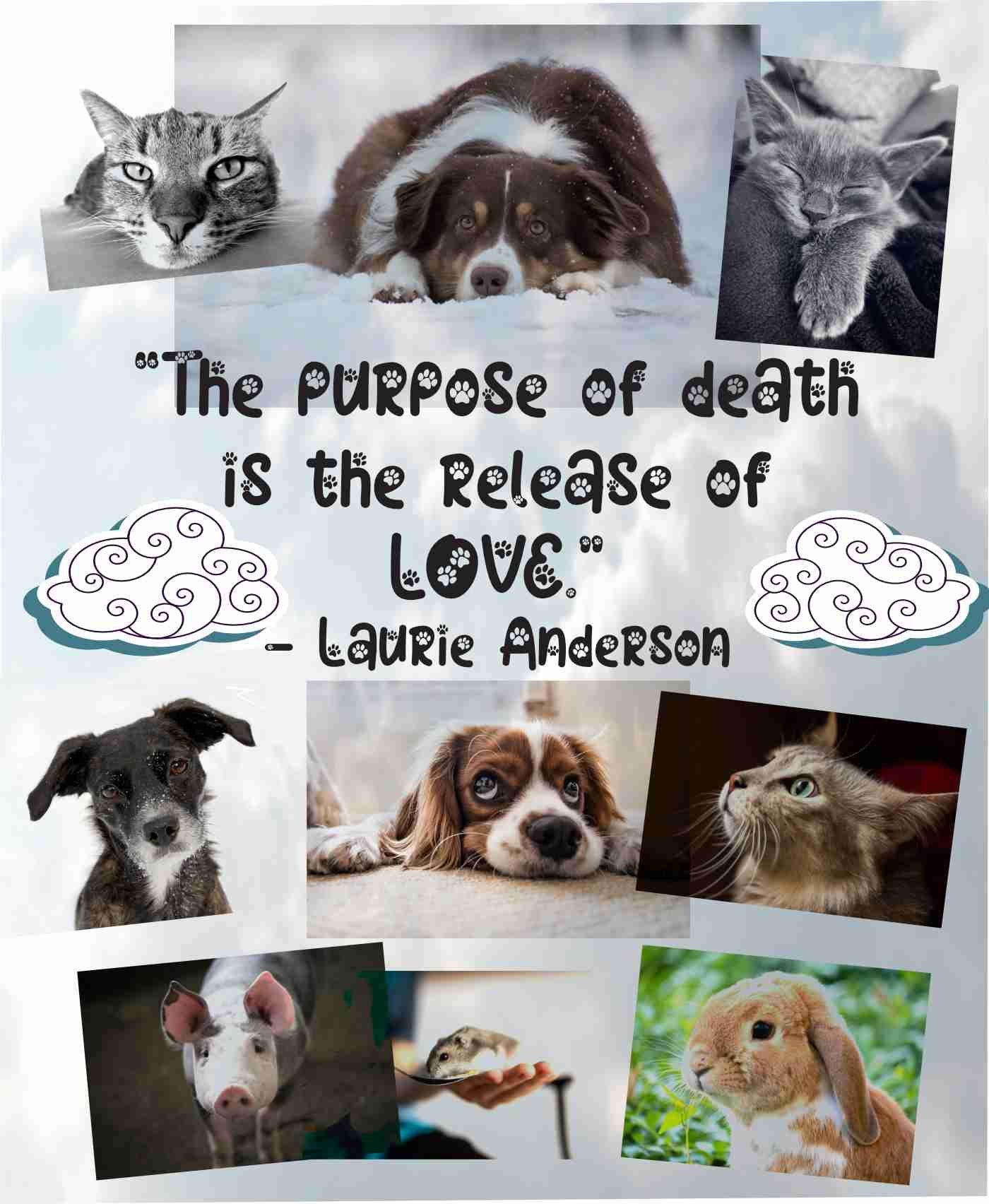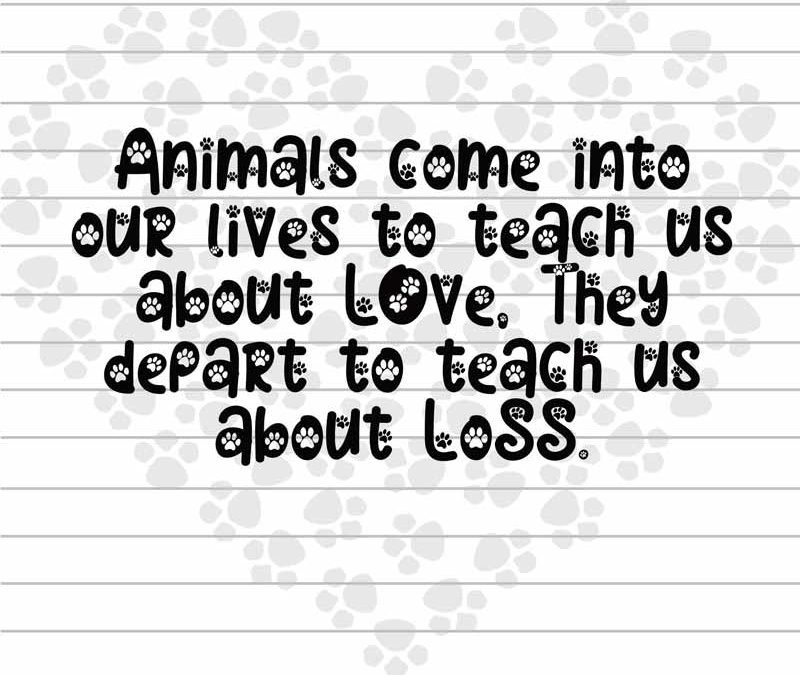Losing a beloved animal can be BEYOND TOUGH.
I still cry my eyes out whenever I think of Ramzes, our beloved dog.
I didn’t know how I could go on without him, and I’m still trying to figure out this whole life-death-impermanence thing. I kept reading and digging, trying to piece myself together.
And one thing you need to know about me, is that when I don’t know what to do–I read. And write!
So, I thought I’d compile a list of activities that can help you (and your family) deal with the loss.

30+ Creative Ideas for Projects & Activities to Help Children and Families Grieve Loss of an Animal
By using arts and crafts as an emotional outlet, children and adults can express their sadness and open up about their thoughts and emotions with others. These activities can provide a safe place for everyone to express their emotions and feel in control again.
NOTE: Don’t judge your work or worry about grammar or spelling. Don’t tell your child (or yourself) to draw, write or paint neatly, color inside the lines, or worry about technique. There’s no grading, comparison, or competition. There are no certificates, awards and exhibitions waiting for you. Allow them and yourself tune in to what they’re feeling in the moment, and create your art from deep within your heart.
Here are some ideas for projects and activities that you can do:
Simply stop and remember your beloved animal. This is one of the best ways to honor the memory of your pet. Simply take time to remember. If there’s an object that helps you do this, use the object. It doesn’t matter if the association doesn’t make any sense — it does to you.
Draw or paint a picture. It can be hard to find the words to express your feelings, and art provides a safe space for expression. It doesn’t need to be of the pet itself, just anything that comes to mind.
Write in your journal. It doesn’t need to be of the pet itself, just write or draw what’s on your mind.
Take a walk along your route. Saying goodbye to a pet also means losing daily rituals. If you lost a dog, perhaps you could memorialize your life with them by mindfully walking along your route. This may be too painful just after your dog’s passing, but it will eventually remind you that life goes on in similar ways.
Draw or paint a picture of your pet. Display it in your chosen room.
Make a picture frame for a favorite pet photo. Frame a photo of your pet or a collage or photos to hang on the wall. You may want to keep it by your bed, or in the living room, or in a special place you choose, where you can look at it and remember the good times.
Make a photo album of you and your pet. Or create a scrapbook using pictures, drawings and anything else that reminds you of your pet.
Write a story, poem, or book about your pet. It can be funny, with rhymes, or more serious.
Create a comic about your pet’s life. Describe real or imaginary events.
If your family has musical talent, write a special song about your pet.
Write a letter to your pet. If words move you, write your pet a love letter.
Write a letter from your pet to you (from your pet’s point of view).
Write your pet’s life story from their point of view.
Tell the story of your pet’s life, out loud. You can do it alone or in front of others. There is some real power in speaking your words, honor, and love for a pet out loud. If you don’t know what to say, read what you wrote out loud.
Dance or move like your pet. Did your pet move in a certain way that was unique to them? Did he or she have certain mannerisms? If you’re the kind of person that loves to move, embody these yourself, even if it only takes a moment. You’ll be amazed at how strongly the memory of your dog may come back.
Create a ceremony, as simple or complicated as you wish. If you like ritual, you can design something as simple as lighting a candle in memory of your dog, or reading a poem, or some sort of actions that comprises a ceremony that honors your dog. It can be simple or complex, changing or unchanging, and repeated or one time.
Hold a memorial service for the pet. It can take place at your home, in your backyard, or somewhere in nature, and may include sharing memories and stories of the pet.
Plant flowers or a tree in memory of the pet. Plant a tree, a flower, or something beautiful that reminds you of your dog. If your pet liked a particular place in a garden or park, plant something that reminds of you of that nice memory.
Decorate a pot with paint and craft supplies. Plant a flower or a plant to grow in it.
Create a memory box. Decorate it with your pet’s name, and put special items, such as photos, their favorite toy, their collar or brush, etc. inside it. Memory boxes allow us to remember the good times that were had with our pets. You will need boxes of different sizes, a variety of craft paper, pieces of cloth material, ribbons, tags, and clear-drying glue. Gather a special collection of items that remind you of the treasured memories you created with your beloved animal. Looking at the items in the memory box at a later time will help you realize you can feel different emotions about memories at different times.
Make a memorial stone using acrylic paint to commemorate your pet. You can put it in your backyard or next to your pet’s grave.
Make a sculpture of your pet using clay or colored play dough.
Create a temporary shrine. There are likely items in your home that belonged to or remind you of your pet, such as a scratch post, dog toys, or dog bed. Choose a space in your home to arrange these items. Light a candle or incense to honor the memory of your pet.
Create a special place where your family can come to sit, relax and remember your pet. It can be in your home or backyard. You could plant a flowering tree to remember your pet by, choose a memorial stone to put in the garden.
Take time to remember your pet. Pull out your photo album or memory box, and look through them slowly, letting the happy memories come back to you and thanking these animals for their time with me.
Draw or make grief masks out of clay. When we grieve, we sometimes try to put on a brave face and not show how we truly feel. By drawing masks or creating clay masks, you can express how you feel. After the grief masks are completed, talk with your parents about your choice of colors, mask designs, and mask shapes. To make clay masks, you will need modeling clay, acrylic paints, and a variety of paintbrushes.
Make or buy a piece of jewelry and personalize it with your pet’s name or a few special words.
Design t-shirts and/or calendars and have them printed on demand with your pet’s name, picture, or a few words.
Donate money or supplies to an animal shelter, sanctuary, or your favorite animal rescue organization in memory of your pet. It can be a shelter for cats and dogs, a farm animal sanctuary, or a wild animal protection organization.
Volunteer at an animal shelter or sanctuary in memory of your pet.
Go vegan for a month or for life. Educate yourself about healthful whole-plant-based foods. By doing so, you’ll be extending love and compassion to farm animals, including cows, pigs, turkeys, chickens, fishes.
ADOPT, don’t shop. When you decide it’s time to bring another animal into your home and life, adopt, don’t shop. There are thousands of animals waiting for adoption in shelters all over the country, waiting for someone like you.
Read books and watch movies about animals. These don’t have to be about death and dying, but can be around these themes, as well as impermanence, going through difficult times, and handling difficult emotions. You can also read uplifting stories about animals or watch movies.
Learn and use simple breathing meditation to release grief and other difficult emotions. (See the last section of this book.)
Play a detective, describing your emotions and how they feel in your body, and then releasing them.
Learn and use Emotional Freedom Technique, also known as tapping. (More about it in the book).
Check out my book: I Will Always Love You: Dealing With Pet Loss (Helping Families That Lost a Pet) on Kindle and in print version: I Will Always Love You: Dealing With Pet Loss (Helping Families That Lost a Pet)
And don’t forget: Adopt, NEVER Shop!
Joanna





